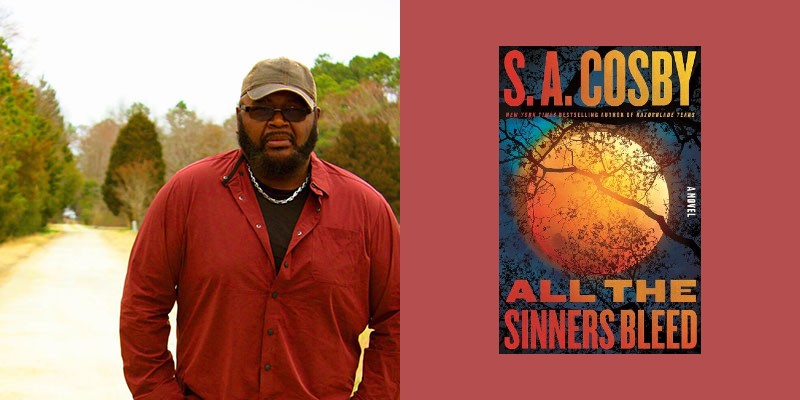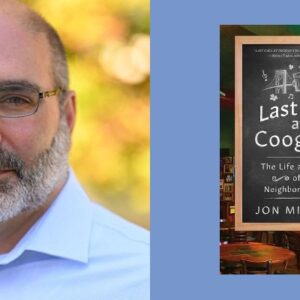The success of Thomas Harris’s “Silence of the Lambs” unleashed a tide of serial killer novels throughout the ‘90s and ‘00s. You couldn’t walk through the front door of a bookstore or past an airport book kiosk without spying at least three or four titles dedicated to a mad butcher with a pun-y nickname and an inventive (or derivative) modus operandi.
While many authors of those books succeeded wildly (including Harris himself, who followed up “Silence” with two sequels), the genre’s omnipresence put it at risk of exhaustion. How many ways can a diabolical genius kill the undeserving or hold a city hostage? How many different psychologists and cops can you set against them before the entire exercise tumbles into a thicket of clichés?
Crime author S.A. Cosby, coming off the wild success of “Blacktop Wasteland” and “Razorblade Tears,” decided to tap into what others might’ve thought was a stripped-out vein—and found rich ore. The result is “All the Sinners Bleed,” which combines a serial-killer procedural with the rural noir that made Cosby famous, while also touching on some of the day’s most live-wire social issues. The result is probably the most gripping (and gothic) country-set slaughterfest since the first season of “True Detective.”
“All the Sinners Bleed” centers on Titus Crown, a former FBI agent turned the first Black sheriff of Charon County, Virginia. When the novel begins, Titus is having the mother of all bad days: a school shooting has rocked the county. But even that horrific event pales in comparison to what comes next: Titus’s investigation into the shooting reveals a serial killer stalking the county, butchering Black children. Titus is a brilliant detective but he’s as much a product of blood-soaked Charon County as anyone else in the novel, and he must wrestle down his own demons if he wants to find the killer.
As the title suggests, “All the Sinners Bleed” also tackles religion. A church can bind a community together, but someone armed with the wrong kind of faith can cause incalculable harm. S.A. Cosby answered some questions about his inspiration for the book and Charon County’s spooky killer, as well as how he writes:
“All the Sinners Bleed” covers a lot of thematic territory and touches on a host of hot-button issues, from the South’s complicated (and blood-soaked) history to school shootings. When you started writing the book, what themes did you want to explore, and how was this particular narrative—a vicious serial killer stalking a county—the best way to do that?
Actually, the original idea was to use the county as a microcosm to talk about police brutality, but I realized pretty quickly I didn’t have enough emotional distance to write about it objectively. So, I switched gears and decided to write about my usual topics plus religion and sex, and honestly, that microcosm still worked.
Serial killer investigations are particularly interesting territory in terms of crime fiction. For a long time, it seemed like the genre was oversaturated; all through the ‘90s, for example, it seemed like we had a dozen-plus Thomas Harris rip-offs on New Release shelves at any given time. But it also gained some new life thanks to shows like “True Detective” that played with some of the classic tropes. What inspired you when you were crafting the story, and what’s your philosophy when it comes to serial killer narratives?
I think every crime writer has at least one serial killer book in them. For me, I’m fascinated by the person or persons who stand up and face the killer or killers more than I’m fascinated with the killer. I’m interested how standing in the gap against the darkness affects characters. And ‘True Detective’ was a huge inspiration in that respect. But I also think serial killers are our modern boogeymen and I wanted to explore that sort of shared miasma.
I think for a serial killer plot to work, you have to ground it in reality. For instance, the victims can’t be from the same small town the killer is, because it is gonna be real noticeable if seven people go missing from a town of 8,000 people.
The book’s fictional Charon County is a character unto itself in this book. What was your approach to worldbuilding, and how much time did that take before you actually began the writing process?
I really wanted Charon to have a hint of the mythic, of the legendary. I read books and watched documentaries about small towns that dealt with a serial murder. Places like Texarkana and the Moonlight Murders. I wanted to articulate that particular sense of dread that arises when the place you love is corrupted.
When it comes to plot, are you a plotter or a pantser? That is, do you write extensive outlines, or do you just see where the muse takes you?
I’m an in-between. I write a short synopsis and use it as a road map. I’m too cowardly to be a pantser [laughter].
What’s next after “All the Sinners Bleed”?
I’m working on a novel now about three siblings who run a crematory who find themselves in debt to vicious criminals while harboring a deep dark family secret. You know, more of my lighthearted family fare.

















